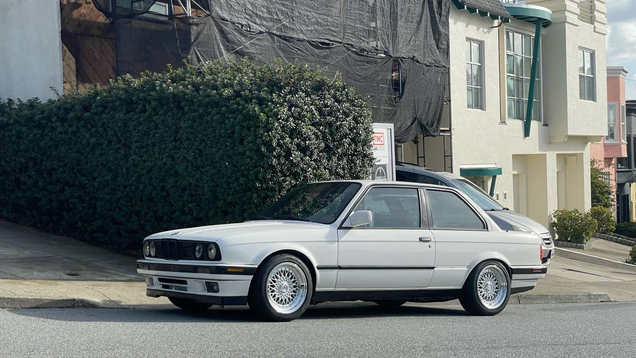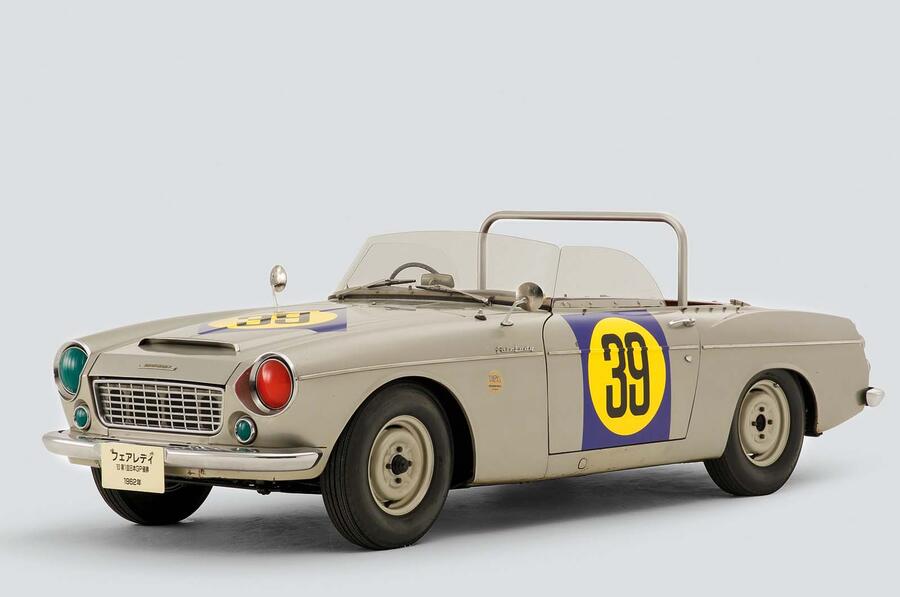Featured
“2025 Autocar Drivers of Change Nominations Now Open | Giga Gears”
 Autocar, Ennis & Co and SMMT launch new awards to celebrate diverse automotive talent
Autocar, Ennis & Co and SMMT launch new awards to celebrate diverse automotive talent
Autocar has opened nominations for the 2025 Drivers of Change awards, a new initiative held in association with Ennis & Co and the Society of Motor Manufacturers and Traders (SMMT) to champion diverse talent in the automotive industry.
A returning name with a completely new format and approach, Drivers of Change is a sibling event to Autocar’s Great Women initiative, which celebrates the automotive industry as a place that welcomes everybody.
Autocar Drivers of Change winners will be individuals who are driving change and promoting diversity in their business in whichever role they perform. Judges will be looking for entries that can demonstrate the adoption of diversity of background, experience and thought in their business.
Winners will be named in nine categories but anyone appearing on the shortlist will be able to call themselves an 'Autocar Driver of Change'. They will all be celebrated at a special event hosted at the SMMT’s London headquarters on 6 February 2025.
The top candidates will be selected from the following areas of the car industry: marketing; manufacturing; operations; PR and communications; purchasing; retail; sales; talent; and vehicle development.
Individuals can put themselves forward for consideration, or can be nominated by friends, colleagues and employers. The awards are open to all working in the British car industry, and Britons working abroad.
Do you know someone you could nominate? Think far and wide within your organisation - we’re encouraging people to think outside of their immediate team for people deserving of an award.
Those nominating will need to supply evidence of the nominee’s business and/or industry impact. There is no limit to the number of nominations that can be submitted by a company.
Head here to submit your nomination before the deadline on 25 October.
“Carlos Ghosn Ordered to Pay Nissan $32M and Yacht”

Good morning! It’s Thursday, September 26, 2024, and this is The Morning Shift, your daily roundup of the top automotive headlines from around the world, in one place. Here are the important stories you need to know.

Mazda CX-80 Review | Giga Gears
 Mazda's new flagship – a seven-seat SUV – arrives to challenge the likes of the Skoda Kodiaq
In the world of eccentric Japanese car manufacturers, the maker of this car, the new Mazda CX-80, is perhaps the most unpredictable and wilful.Take the Pathfinder XV-1: a Series 1 Land Rover knock-off, only even more goggle-eyed, especially when painted Kermit green, as many were. In the 1960s, a tiny run of these 4x4s left a dedicated Mazda plant in what was then Burma, having been ordered by various government agencies. The funny thing is that even today some Mazda execs won’t believe the XV-1 really existed unless you show them a physical specimen. With its badges. If the XV-1 was at least functional, the Parkway 26 was the oddball motor show concept that made production. With a glasshouse to rival that of The Shard, the pretty-ish 26 was a three-tonne, 25-seat minibus hauled along by, of all things, a gutless two-rotor Wankel. To make anything like progress, the thing had to be so remorselessly caned that two 70-litre fuel tanks were needed to assuage its thirst. A good-old reciprocating engine of 1000cc was also called for if you wanted to power the air-con. Talk about a vicious cycle. Just 44 were made. All of which is to say that, for Mazda, developing a big-capacity oil-burner from scratch, then launching it into Europe amid the continent’s prevailing, puritanical anti-diesel sentiment, is a perfectly normal thing to do.Its clever new mild-hybrid 3.3-litre straight six made its debut a year or two ago in the Mazda CX-60. That car was a mid-sized SUV with an interesting interior, quietly engaging handling and conspicuously poor ride quality, in thanks part to an over-damped back axle.We rather liked the longitudinal motor, though. Depending on driveline, it came with either 197bhp and 332lb ft (RWD) or 251bhp and 406lb ft (4WD) – both modest outputs given the displacement, in return for easy drivability and efficiency. It duly delivered both.That car now has a bigger sibling in the form of the CX-80 tested here. It's a seven-seater designed to take on the likes of the Skoda Kodiaq and Hyundai Santa Fe, and has come in for some chassis tweaks, to make it more refined on the move. Has it worked? Time to find out.
Mazda's new flagship – a seven-seat SUV – arrives to challenge the likes of the Skoda Kodiaq
In the world of eccentric Japanese car manufacturers, the maker of this car, the new Mazda CX-80, is perhaps the most unpredictable and wilful.Take the Pathfinder XV-1: a Series 1 Land Rover knock-off, only even more goggle-eyed, especially when painted Kermit green, as many were. In the 1960s, a tiny run of these 4x4s left a dedicated Mazda plant in what was then Burma, having been ordered by various government agencies. The funny thing is that even today some Mazda execs won’t believe the XV-1 really existed unless you show them a physical specimen. With its badges. If the XV-1 was at least functional, the Parkway 26 was the oddball motor show concept that made production. With a glasshouse to rival that of The Shard, the pretty-ish 26 was a three-tonne, 25-seat minibus hauled along by, of all things, a gutless two-rotor Wankel. To make anything like progress, the thing had to be so remorselessly caned that two 70-litre fuel tanks were needed to assuage its thirst. A good-old reciprocating engine of 1000cc was also called for if you wanted to power the air-con. Talk about a vicious cycle. Just 44 were made. All of which is to say that, for Mazda, developing a big-capacity oil-burner from scratch, then launching it into Europe amid the continent’s prevailing, puritanical anti-diesel sentiment, is a perfectly normal thing to do.Its clever new mild-hybrid 3.3-litre straight six made its debut a year or two ago in the Mazda CX-60. That car was a mid-sized SUV with an interesting interior, quietly engaging handling and conspicuously poor ride quality, in thanks part to an over-damped back axle.We rather liked the longitudinal motor, though. Depending on driveline, it came with either 197bhp and 332lb ft (RWD) or 251bhp and 406lb ft (4WD) – both modest outputs given the displacement, in return for easy drivability and efficiency. It duly delivered both.That car now has a bigger sibling in the form of the CX-80 tested here. It's a seven-seater designed to take on the likes of the Skoda Kodiaq and Hyundai Santa Fe, and has come in for some chassis tweaks, to make it more refined on the move. Has it worked? Time to find out.“Mind-Blowing $27K S52-Swapped 1991 BMW 318i | Giga Gears”

BMW fans hold the ’80s E30 in extremely high regard. Today’s Nice Price or No Dice 318i has been upgraded with a supercharged S52 straight six, replacing its puny four. Let’s see if that warrants a supercharged price tag.

“Comic Opera Scenes at Japan’s First GP | Giga Gears”
 We reveal the chaos from the debut race at the storied Suzuka race track
We reveal the chaos from the debut race at the storied Suzuka race track
Doing something for the first time is rarely easy, and especially not when those around you are experienced at it. Have a little sympathy, then, for the plight of the Japan Automobile Sports Association (Jasa) in May 1963, as it hosted the burgeoning nation’s first international grand prix meeting.
The stage was splendid Suzuka, opened just eight months prior. No expense had been spared by Honda in the venue’s construction, it being primarily intended as a proving ground for the manufacturer’s motorcycles.
However, as Autocar put it: “Despite excellent amenities, an interesting field of international drivers and cars and efficient pre-race planning, there was little to attract a spectator back.”
You see, while each day’s top-billing sports car race ran flawlessly (in fact, they were “near carbon copies” that offered “little excitement”, with Lotus 23 drivers filling both podiums), the support races were absolutely chaotic.
Enjoy full access to the complete Autocar archive at themagazineshop.com
We explained: “There were no efforts during scrutineering to see that the cars complied with [the FIA’s] regulations. No notice was taken of cars normally fitted with three-speed gearboxes which resplendently boasted four speeds.
Other cars had dual electric petrol pumps supplementing their mechanical ones. Several cars shed bumpers and grilles or changed windscreens after scrutineering.”
Team representatives’ loud protests won them reinspections, but Jasa still wasn’t thorough. And then when it became apparent that some Japanese manufacturers had homologated “all sorts of optional gear and axle ratios”, precluding fair comparisons, it announced that no protests would be accepted except in respect of weight and capacity – despite Hillman having previously been told that it couldn’t enter the commercially available twin-carb version of its Minx.
Further still, one of the British drivers mentioned that nobody had asked to see a medical certificate or international competition licence. In fact, we heard that at least two drivers lacked the latter and one had never even raced on a track!
This may explain the “appalling carnage rate” in the touring car field: 23 of the 100 were written off in practice and a similar number in the races, and many drivers complained of being forced off.
The sub-1300cc GT race was hotly contested between five cars but rather spoiled, first on lap 10 by one taking the hairpin on its roof (“did she fall or was she pushed?”), then the winning Austin-Healey being disqualified for an undersized screen, suspiciously to the benefit of a well-known local motorbike racer.

Less contentious, if not entirely so, after “all sorts of remarkable goodies had been added to the homologation certificate just weeks before”, was a Datsun Fairlady’s win over Triumphs and MGs in the 1300-2500cc GT contest.
The day ended “shambolically” with the 1300-1600cc touring car race. Vauxhall Victor driver Soichi Sakai started swerving down the main straight, more severely lap after lap, to the point that the Toyota Corona driver behind, “leaning on his horn in desperation”, “came very close to collecting a pit signalling man”.
The crowd howled in protest and at the finish “nearly lynched” the “rather crestfallen” Sakai, while his fellow podium finishers walked off in disgust. The stewards then disqualified him, but why hadn’t they done so during the race? It turned out they had been “otherwise engaged” – not that they had a black flag to wave anyway.
Amazingly, even stranger things happened on the second day. Jaguar E-Type driver Arthur Owen was so fast in the over-2500cc GT race that rivals requested his disqualification or retirement, as he’d been “invited only to race, not to win”! He refused, but Jasa gave the trophy to second-placed Tatsu Yokoyama anyway.
“It is doubtful if [the Brit’s] feelings were made any less bitter on being handed a trophy inscribed in Japanese ‘Best Performance by Guest’,” we quipped.
All’s well that ends well, though, and returning to Suzuka in 1964, we were delighted by “a tremendous improvement in the standard of driving and sportsmanship”.
